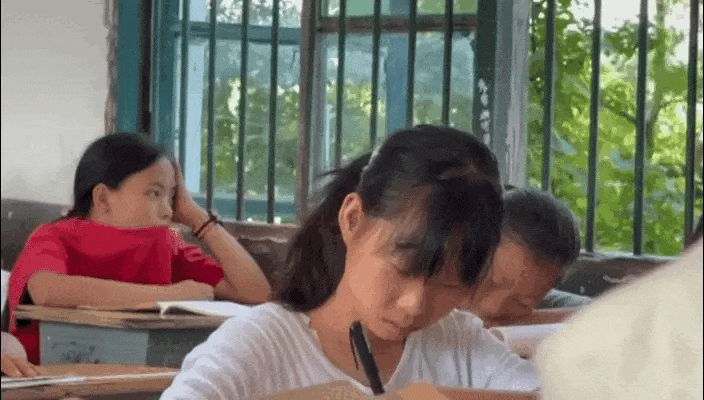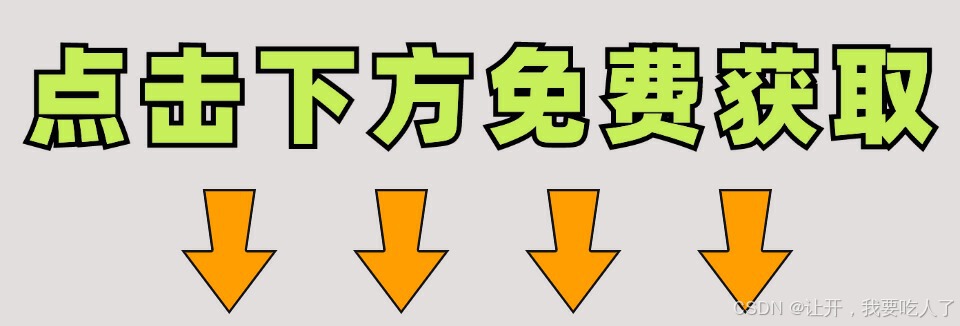LlamaModel源码解析
- 1. LlamaModel 介绍
- 2. LlamaModel类 源码解析
- 3. 4维因果注意力掩码生成
1. LlamaModel 介绍
LlamaModel 是一个基于 Transformer 架构的解码器模型,用于自然语言处理任务。它是 Meta 的 LLaMA (Large Language Model Meta AI) 系列的一部分,设计用于生成任务和自回归文本生成。它通过解码器层、位置编码和归一化层来处理输入序列,并提供了对缓存和注意力机制的支持。它在大规模自然语言生成任务中表现出色,并能够处理复杂的序列依赖关系。

2. LlamaModel类 源码解析
源码地址:transformers/src/transformers/models/llama/modeling_llama.py
# -*- coding: utf-8 -*-
# @time: 2024/8/28 14:36
import torch
from typing import List, Optional, Tuple, Union
from torch import nn
from transformers import LlamaPreTrainedModel, LlamaConfig, Cache, DynamicCache, StaticCache
from transformers.modeling_attn_mask_utils import AttentionMaskConverter
from transformers.modeling_outputs import BaseModelOutputWithPast
from transformers.models.llama.modeling_llama import LlamaDecoderLayer, LlamaRMSNorm, LlamaRotaryEmbedding, LLAMA_START_DOCSTRING, LLAMA_INPUTS_DOCSTRING
from transformers.utils import logging, add_start_docstrings, add_start_docstrings_to_model_forward
logger = logging.get_logger(__name__)
@add_start_docstrings(
"The bare LLaMA Model outputting raw hidden-states without any specific head on top.",
LLAMA_START_DOCSTRING,
)
class LlamaModel(LlamaPreTrainedModel):
"""
Transformer decoder consisting of *config.num_hidden_layers* layers. Each layer is a [`LlamaDecoderLayer`]
Args:
config: LlamaConfig
"""
def __init__(self, config: LlamaConfig):
super().__init__(config)
self.padding_idx = config.pad_token_id # 设置 padding token 的索引
self.vocab_size = config.vocab_size # 设置词汇表的大小
# 1. 定义嵌入层:将输入的 token 转换为隐状态向量。它的大小为 vocab_size x hidden_size
self.embed_tokens = nn.Embedding(config.vocab_size, config.hidden_size, self.padding_idx)
# 2. 定义解码层:使用 nn.ModuleList 定义了一系列的 LlamaDecoderLayer,解码层的数量由 config.num_hidden_layers 决定。
self.layers = nn.ModuleList(
[LlamaDecoderLayer(config, layer_idx) for layer_idx in range(config.num_hidden_layers)]
)
# 3. 定义规范化层:使用 LlamaRMSNorm 进行层归一化处理
self.norm = LlamaRMSNorm(config.hidden_size, eps=config.rms_norm_eps)
# 4. 定义旋转嵌入:使用 LlamaRotaryEmbedding 实现旋转嵌入,用于改进注意力机制中的位置编码
self.rotary_emb = LlamaRotaryEmbedding(config=config)
# 梯度检查点:用于在训练过程中节省内存的功能,默认为 False。
self.gradient_checkpointing = False
# Initialize weights and apply final processing
self.post_init() # 初始化权重并进行最终处理
def get_input_embeddings(self):
return self.embed_tokens
def set_input_embeddings(self, value):
self.embed_tokens = value
@add_start_docstrings_to_model_forward(LLAMA_INPUTS_DOCSTRING)
def forward(
self,
input_ids: torch.LongTensor = None, # 输入的 token ID
attention_mask: Optional[torch.Tensor] = None, # 注意力掩码
position_ids: Optional[torch.LongTensor] = None, # 位置 ID
past_key_values: Optional[Union[Cache, List[torch.FloatTensor]]] = None, # 缓存的 key-value 对
inputs_embeds: Optional[torch.FloatTensor] = None, # 输入嵌入
use_cache: Optional[bool] = None, # 是否使用缓存
output_attentions: Optional[bool] = None, # 是否输出注意力权重
output_hidden_states: Optional[bool] = None, # 是否输出隐藏状态
return_dict: Optional[bool] = None, # 是否返回字典类型的输出
cache_position: Optional[torch.LongTensor] = None, # 缓存位置
) -> Union[Tuple, BaseModelOutputWithPast]:
# -----------------------------1. 初始化一系列输入变量,用于 decoder_layer 的前向传播计算-------------------------------
# 初始化 output_attentions / output_hidden_states / use_cache / return_dict
output_attentions = output_attentions if output_attentions is not None else self.config.output_attentions
output_hidden_states = (
output_hidden_states if output_hidden_states is not None else self.config.output_hidden_states
)
use_cache = use_cache if use_cache is not None else self.config.use_cache
return_dict = return_dict if return_dict is not None else self.config.use_return_dict
# 输入验证:确保 input_ids 和 inputs_embeds 不能同时被指定,但必须指定其中之一。
if (input_ids is None) ^ (inputs_embeds is not None):
raise ValueError(
"You cannot specify both input_ids and inputs_embeds at the same time, and must specify either one"
)
# 如果训练过程中使用梯度检查点且使用缓存,则发出警告,并禁用缓存
if self.gradient_checkpointing and self.training and use_cache:
logger.warning_once(
"`use_cache=True` is incompatible with gradient checkpointing. Setting `use_cache=False`."
)
use_cache = False
# 嵌入计算:根据 input_ids 计算 inputs_embeds,如果已经提供 inputs_embeds,则使用该值。
if inputs_embeds is None:
inputs_embeds = self.embed_tokens(input_ids)
# 如果使用旧的缓存格式,将其转换为新的格式
return_legacy_cache = False
if (
use_cache and not isinstance(past_key_values, Cache) and not self.training
): # kept for BC (non `Cache` `past_key_values` inputs)
return_legacy_cache = True
past_key_values = DynamicCache.from_legacy_cache(past_key_values)
logger.warning_once(
"We detected that you are passing `past_key_values` as a tuple and this is deprecated and will be removed in v4.43. "
"Please use an appropriate `Cache` class (https://huggingface.co/docs/transformers/internal/generation_utils#transformers.Cache)"
)
# 如果没有指定缓存位置,则根据已处理的 token 数量设置缓存位置
if cache_position is None:
past_seen_tokens = past_key_values.get_seq_length() if past_key_values is not None else 0
cache_position = torch.arange(
past_seen_tokens, past_seen_tokens + inputs_embeds.shape[1], device=inputs_embeds.device
)
# 如果没有指定位置 ID,则使用缓存位置作为位置 ID
if position_ids is None:
position_ids = cache_position.unsqueeze(0)
# 更新因果掩码,用于确保解码器只看见当前时间步之前的 token
causal_mask = self._update_causal_mask(
attention_mask, inputs_embeds, cache_position, past_key_values, output_attentions
)
hidden_states = inputs_embeds
# create position embeddings to be shared across the decoder layers
# 位置编码:生成位置编码,用于结合输入嵌入进行旋转嵌入
position_embeddings = self.rotary_emb(hidden_states, position_ids)
# -----------------------------2. 初始化一系列输出变量,用于保存 decoder_layer 前向传播计算的输出结果-------------------------------
# decoder layers
all_hidden_states = () if output_hidden_states else None
all_self_attns = () if output_attentions else None
next_decoder_cache = None
# -----------------------------3. 依次通过每一层,执行 decoder_layer 前向传播计算,同时更新相应的变量值-------------------------------
# 遍历每一层解码器层,并将输入和注意力掩码传递给每一层
for decoder_layer in self.layers:
if output_hidden_states:
all_hidden_states += (hidden_states,)
# 如果使用梯度检查点,则使用特殊方法处理解码器层
if self.gradient_checkpointing and self.training:
layer_outputs = self._gradient_checkpointing_func(
decoder_layer.__call__,
hidden_states,
causal_mask,
position_ids,
past_key_values,
output_attentions,
use_cache,
cache_position,
position_embeddings,
)
else:
# 否则,直接调用解码器层的前向传播方法
layer_outputs = decoder_layer(
hidden_states,
attention_mask=causal_mask,
position_ids=position_ids,
past_key_value=past_key_values,
output_attentions=output_attentions,
use_cache=use_cache,
cache_position=cache_position,
position_embeddings=position_embeddings,
)
# 更新隐藏状态
hidden_states = layer_outputs[0]
# 如果使用缓存,则更新缓存
if use_cache:
next_decoder_cache = layer_outputs[2 if output_attentions else 1]
# 如果输出注意力权重,则将其添加到所有注意力权重的列表中
if output_attentions:
all_self_attns += (layer_outputs[1],)
# -----------------------------4. 获取相应的输出变量,根据条件进行处理后返回结果-------------------------------
# 最后一层的隐藏状态经过归一化处理
hidden_states = self.norm(hidden_states)
# add hidden states from the last decoder layer
# 如果输出隐藏状态,则将最终隐藏状态添加到元组中
if output_hidden_states:
all_hidden_states += (hidden_states,)
# 根据是否使用缓存,返回下一个缓存
next_cache = next_decoder_cache if use_cache else None
if return_legacy_cache:
next_cache = next_cache.to_legacy_cache()
# 输出处理
# 如果不返回字典,则返回元组类型的输出
if not return_dict:
return tuple(v for v in [hidden_states, next_cache, all_hidden_states, all_self_attns] if v is not None)
# 返回 BaseModelOutputWithPast 类型的字典,包括最后的隐藏状态、缓存、隐藏状态和注意力权重
return BaseModelOutputWithPast(
last_hidden_state=hidden_states,
past_key_values=next_cache,
hidden_states=all_hidden_states,
attentions=all_self_attns,
)
# 更新因果掩码方法,确保模型只能看到当前时间步之前的 token
def _update_causal_mask(
self,
attention_mask: torch.Tensor,
input_tensor: torch.Tensor,
cache_position: torch.Tensor,
past_key_values: Cache,
output_attentions: bool,
):
# TODO: 自 torch==2.2.0 以来,传递给模型的 `attention_mask` 在生成过程中是 2D 的,并且长度是动态的,即使使用了静态 KV 缓存。
# 这会导致 torch.compile 在每个解码步骤中重新捕获 cudagraphs,因为形状是动态的,这是非常慢的。
# 一种解决方法是使用 `@torch.compiler.disable`,但这会阻止使用 `fullgraph=True`。
# 更多背景信息可以参考 https://github.com/huggingface/transformers/pull/29114
# --------------------------flash_attention_2 注意力和 sdpa 注意力的配置判断-------------------------------
# 如果配置的注意力实现是 "flash_attention_2"
if self.config._attn_implementation == "flash_attention_2":
# 如果提供了 attention_mask 且其中包含 0.0,则直接返回 attention_mask;否则返回 None,表示不需要额外处理
if attention_mask is not None and 0.0 in attention_mask:
return attention_mask
return None
# 对于 SDPA(Scaled Dot-Product Attention),我们将依赖它的 `is_causal` 参数而不是 `attn_mask` 参数,以便分派到 Flash Attention 2 实现。这种特性与静态缓存不兼容,因为 SDPA 无法推断出注意力掩码。
past_seen_tokens = past_key_values.get_seq_length() if past_key_values is not None else 0 # 获取已经看到的 token 数量
using_static_cache = isinstance(past_key_values, StaticCache) # 检查是否使用静态缓存
# 当 output_attentions 为 True 时,SDPA 实现的前向传播方法会调用 eager(迫切)实现的前向传播方法
if self.config._attn_implementation == "sdpa" and not using_static_cache and not output_attentions:
# 检查是否可以忽略 SDPA 的因果掩码
if AttentionMaskConverter._ignore_causal_mask_sdpa(
attention_mask,
inputs_embeds=input_tensor,
past_key_values_length=past_seen_tokens,
is_training=self.training,
):
return None
# -------------------------初始化一系列输入变量,用于 4d_causal_attention_mask 的计算--------------------------
dtype, device = input_tensor.dtype, input_tensor.device # 获取输入张量的 dtype 和设备信息
min_dtype = torch.finfo(dtype).min # 获取 dtype 的最小值,用于填充掩码
sequence_length = input_tensor.shape[1] # 获取序列长度
# 如果使用静态缓存,target_length为缓存中已看到的最大长度
if using_static_cache:
target_length = past_key_values.get_max_length()
else:
# 否则target_length为注意力掩码的最后一个维度长度,或者已看到的 token 数量加上当前序列长度再加 1
target_length = (
attention_mask.shape[-1]
if isinstance(attention_mask, torch.Tensor)
else past_seen_tokens + sequence_length + 1
)
# In case the provided `attention` mask is 2D, we generate a causal mask here (4D).
# 提供的 `attention_mask` 是 2D 的,我们在这里生成一个因果掩码(4D 的)。
causal_mask = _prepare_4d_causal_attention_mask_with_cache_position(
attention_mask,
sequence_length=sequence_length,
target_length=target_length,
dtype=dtype,
device=device,
min_dtype=min_dtype,
cache_position=cache_position,
batch_size=input_tensor.shape[0],
)
# --------------------输出结果 causal_mask 的进一步操作(可选)----------------------
# 如果配置的注意力实现是 "sdpa",且 `attention_mask` 存在,并且设备类型为 CUDA 且不输出注意力权重
if (
self.config._attn_implementation == "sdpa"
and attention_mask is not None
and attention_mask.device.type == "cuda"
and not output_attentions
):
# 在因果掩码中完全掩盖的行中,使所有 token 可见,例如使用左填充时的相关第一行。这是为了适应 F.scaled_dot_product_attention 的内存高效路径。详情请参考:https://github.com/pytorch/pytorch/issues/110213
causal_mask = AttentionMaskConverter._unmask_unattended(causal_mask, min_dtype)
# ---------------------返回最终的因果掩码------------------------------------------
return causal_mask
3. 4维因果注意力掩码生成
_prepare_4d_causal_attention_mask_with_cache_position 函数用于生成一个4维的因果注意力掩码(causal attention mask),适用于生成任务中的自回归解码器。这个掩码有助于确保模型在生成序列时仅能基于当前和之前的 token,而不查看未来的 token。以下是对该函数的源码解释:
# -*- coding: utf-8 -*-
# @time: 2024/8/28 14:36
# 生成4D的因果注意力掩码方法
def _prepare_4d_causal_attention_mask_with_cache_position(
attention_mask: torch.Tensor,
sequence_length: int,
target_length: int,
dtype: torch.dtype,
device: torch.device,
min_dtype: float,
cache_position: torch.Tensor,
batch_size: int,
):
"""
Creates a causal 4D mask of shape `(batch_size, 1, query_length, key_value_length)` from a 2D mask of shape
`(batch_size, key_value_length)`, or if the input `attention_mask` is already 4D, do nothing.
Args:
attention_mask (`torch.Tensor`):
A 2D attention mask of shape `(batch_size, key_value_length)` or a 4D attention mask of shape `(batch_size, 1, query_length, key_value_length)`.
sequence_length (`int`):
The sequence length being processed.
target_length (`int`):
The target length: when generating with static cache, the mask should be as long as the static cache, to account for the 0 padding, the part of the cache that is not filled yet.
dtype (`torch.dtype`):
The dtype to use for the 4D attention mask.
device (`torch.device`):
The device to plcae the 4D attention mask on.
min_dtype (`float`):
The minimum value representable with the dtype `dtype`.
cache_position (`torch.Tensor`):
Indices depicting the position of the input sequence tokens in the sequence.
batch_size (`torch.Tensor`):
Batch size.
"""
# 1. 检查掩码维度:如果输入的 attention_mask 是4维的,直接使用它作为 causal_mask,因为它已经是所需的形式。
if attention_mask is not None and attention_mask.dim() == 4:
# In this case we assume that the mask comes already in inverted form and requires no inversion or slicing.
causal_mask = attention_mask
else:
# 2. 生成默认4D掩码:创建一个全0的2D掩码,形状为 (sequence_length, target_length),并用 min_dtype 填充。
causal_mask = torch.full((sequence_length, target_length), fill_value=min_dtype, dtype=dtype, device=device)
# 如果 sequence_length 不等于1,将掩码的上三角部分设置为 min_dtype,以创建因果掩码(上三角矩阵,确保每个位置只能关注自己及之前的位置)。
if sequence_length != 1:
causal_mask = torch.triu(causal_mask, diagonal=1)
# 3. 调整掩码以考虑缓存位置:根据 cache_position 计算掩码的位置,causal_mask 的值将根据 cache_position 进行调整,以便正确处理缓存。
causal_mask *= torch.arange(target_length, device=device) > cache_position.reshape(-1, 1)
# 4. 扩展掩码以适应批处理:将掩码扩展到4维,并适应批处理大小 (batch_size),最终的形状为 (batch_size, 1, sequence_length, target_length)。
causal_mask = causal_mask[None, None, :, :].expand(batch_size, 1, -1, -1)
# 5. 融合外部注意力掩码:如果提供了外部的 attention_mask,则将其与生成的 causal_mask 结合。通过掩码位置设置正确的填充,以确保只关注有效位置。
if attention_mask is not None:
causal_mask = causal_mask.clone() # copy to contiguous memory for in-place edit
mask_length = attention_mask.shape[-1]
padding_mask = causal_mask[:, :, :, :mask_length] + attention_mask[:, None, None, :]
padding_mask = padding_mask == 0
causal_mask[:, :, :, :mask_length] = causal_mask[:, :, :, :mask_length].masked_fill(
padding_mask, min_dtype
)
return causal_mask



















